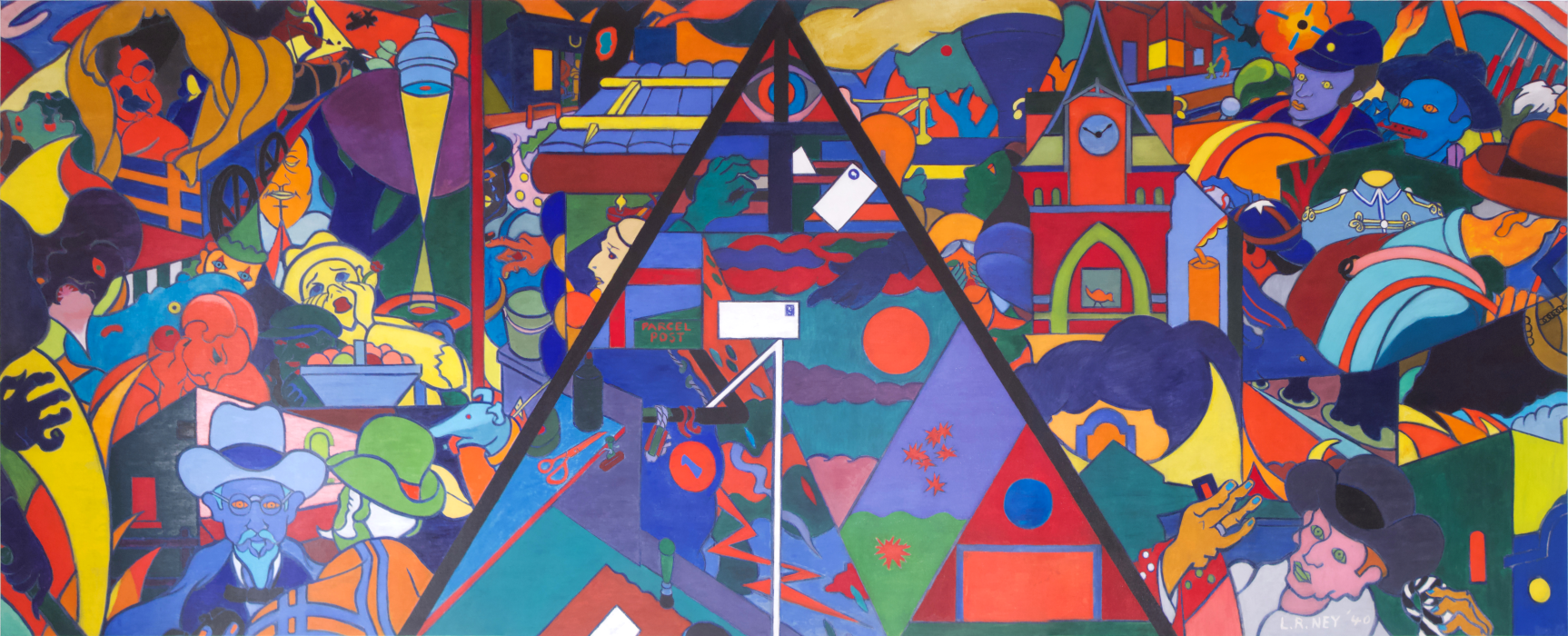Information
New London Facets could have marked a dramatic transition for the Treasury Department's Section of Fine Arts: it was the Section's first abstract post office mural. But since the program ended with United States entry into World War II, Lloyd Ney's mural came too late in the program to have any significant impact on its direction. There were, in fact, no other abstract murals funded under the program.
How Ney's mural came to exist at all is a remarkable story - a testament to Ney's tenacity in trying to advance his vision of modern art and a rare example of the Section's willingness to adhere to its social goals even when they appeared to conflict with the taste in art of its administrative officials.
Ney was awarded a commission for the New London Post Office upon the recommendation of a jury for the St. Louis Post Office, where his proposal was rejected but was seen as an outstanding effort. Ney then provided the Section with a rudimentary cartoon for the New London mural. It showed a wide road with boundaries merging into a point of perspective at the top of the mural. The road was lined with trees and a few elements meant to illustrate activities in the region.
This looked fine to the Section. But when Ney filled in the details - the "facets" of life in New London, depicted as a brilliantly colorful collage - the result was too overwhelming for the Section's officials to handle. It wasn't strictly representational; it didn't use realistic colors; its colors clashed; its figures bounced around the canvas in an energetic array. In short, it was an abstract composition. And the Section had dedicated itself to presenting art in the American Scene style - almost the antithesis of what Ney was presenting.
But in another sense, Ney had done exactly what the Section had demanded of its artists. First he had spent time in New London, met with many of its residents, learned the stories that they told each other about the town, and slowly explained to them how he intended to create images that would pull all these stories together. In this sense his painting would literally be an American scene. And the fact that this scene would be presented in a unique style did not confuse the people of New London; rather it made them proud that their town would have a mural unique among the thousand other murals across the country.
The Section had never anticipated that a truly American scene could be presented in a style of art that departed dramatically from the "American Scene" style that they knew so well. But Ney was confident it would work - and confident that the people of New London would back him up on this. So Ney lobbied hard if somewhat obnoxiously on behalf of his work. But along with his personal efforts there was the continued endorsement of the jury for the St. Louis project and - above all - the loud and clear endorsement of the town of New London. The New London Rotary Club launched a petition on behalf of the mural and Section officials, largely worn down by this campaign reluctantly granted Ney permission to proceed. In their internal correspondence the momentous decision to allow abstract art into their program was acknowledged with the words "What the hell!"
There was at least one precedent for Section officials to make their personal prejudices secondary to public opinion. The mural proposed for Goshen, New York was to feature horse racing, soomewhat to the horror of the Section. But here, as later in New London, people in Goshen strongly backed Georgina Klitgaard's proposal, and a portrayal of the Hambletonian Stake graces the Goshen Post Office to this day.
